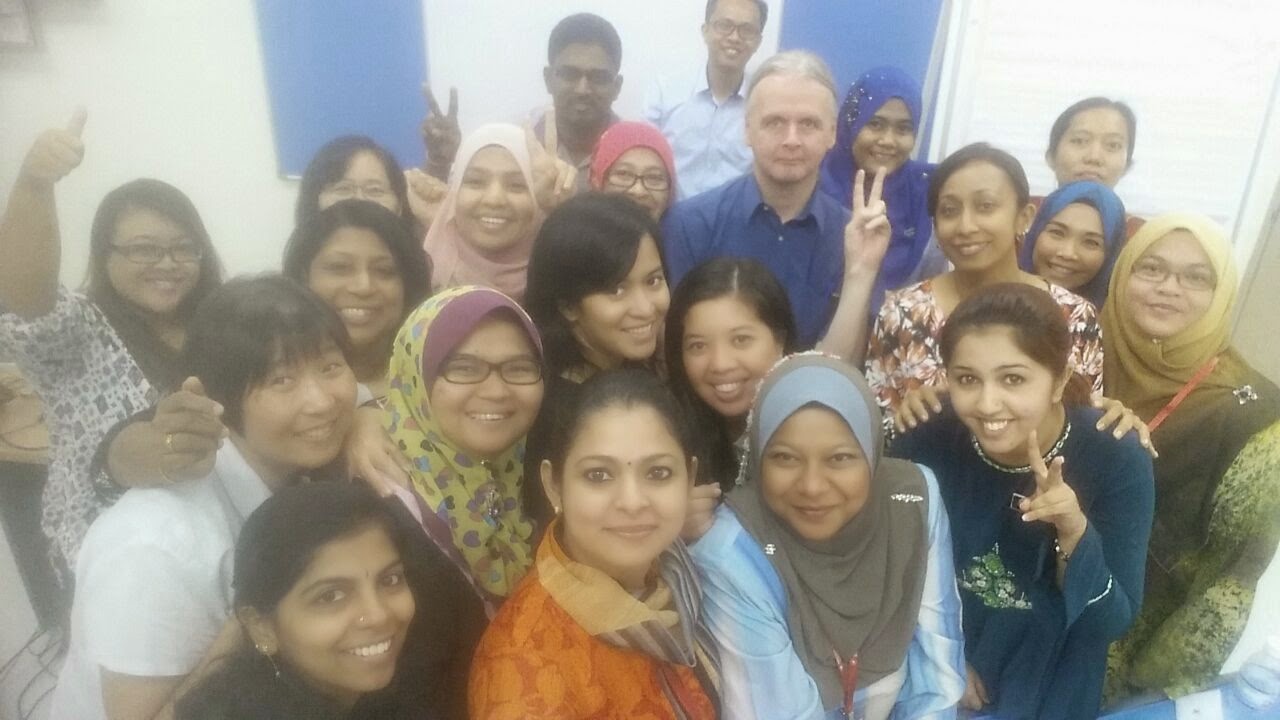Topic
: EMPLOYABILITY SKILLS
Time : 9am- 10.30am
Day : 13 October 2014
Tutor
: Katie
Report
Today Katie taught us about
employability skills. She stressed on the importance of presentation skills.
She started the lesson by providing pictures depicting various kinds of
gestures as a set induction.
 In groups, we identified the meaning of the
pictures with gestures. Some of these gestures would have negative meanings in
different cultures. Gestures are very important in presentation skills.
In groups, we identified the meaning of the
pictures with gestures. Some of these gestures would have negative meanings in
different cultures. Gestures are very important in presentation skills.
Useful language phrases were
provided to be used during oral presentations. Our task was to prepare the
opening phase of a presentation .She handed out KISS (Keep It Short and Simple)
menu cards to students. Learners choose a KISS menu card. Learners applied the
KISS principle to each topic in the menu card while practicing for opening
phase of their presentations.
We thoroughly enjoyed the
activities that were presented by Katie.
We could easily adapt these activities in our classroom especially while
teaching presentation skills.
Reflection
Reflection
Before we start with our reflection, we want to define
what employability skills are.
Employability skills are those skills necessary for getting, keeping and
being successful in a job. They are the
skills and attitudes that enable employees to get along with their colleagues, make
critical decisions, solve problems, develop respect and ultimately become
valuable employee for the organisation. Employability/
soft skills/ transferable skills are the foundation of one’s career. These are the skills that employers feel as
lacking in school-leavers, graduates and those already in an employment. Thus organisations spend a lot of time and
money training staff, not in job specific areas or technical skills but in
general and basic skills.
Employers often outline a set of employability skills
that they want from an employee. According
to University
of Kent Careers and Employability Service, the
top ten skills that were most often deemed important are:
1) Verbal communication - Able to express
your ideas clearly and confidently in speech
2) Teamwork - Work confidently within a group
3) Commercial Awareness - Understand the commercial
realities affecting the organisation.
4) Analysing & Investigating - Gather information
systematically to establish facts.
5) Initiative / Self Motivation - Able to act on
initiative, identify opportunities & proactive in putting forward ideas
& solutions
6) Drive - Determination to get things done. Make things
happen & constantly looking for better ways of doing things.
7) Written communication - Able to express yourself clearly in writing
8) Planning & Organising - Able to plan activities
& carry them through effectively
9) Flexibility - Adapt successfully to changing
situations & environments
10) Time management
Besides the data taken from University of Kent Careers
and Employability Service website, other websites that talked about on employability
skills also state that communication and interpersonal skills are one of the important
skills to learn. Thus we felt that it was appropriate to give more information
on giving presentation in the English language class.
Presentation skills are very important for students to
master. They might have to give an
individual or group presentation. Most
employers need their employee to give presentation on important matters.
Our tutor, Ms. Katie talked about what kind of language
to use when opening a presentation and asking and responding to questions. In addition, she touched on the tips on
giving presentation and signposting.
In our opinion, it is an excellent idea for teachers
to give tips on how to prepare and give effective presentation. Through discussions, students and teachers
could come up with language forms, language functions and signposting that
could be used during presentation.
Sometimes students might forget about the tips for giving effective presentation,
thus we felt it is a good idea to keep reminding students in the subsequent lessons. Handouts and practices also help. Students
need handouts on language forms, language functions and signposting. In addition, we think that some practices
during classroom time will definitely help students. Teacher and peer feedback
are also useful to help students to spot their mistakes. On the other hand, no matter how much input
has been given by teachers, it will be useless if students do not help
themselves by doing more practices.
Find more at:
Recommendation:
1) Videos on YouTube could be shown in order
to enhance students understanding. We
could show videos on bad and good presentation and have a discussion on it.
2) We should also teach other employability
skills such as negotiation skills.









